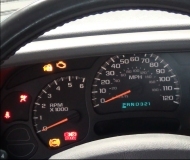Both voltages are too low. A fully charged battery will read 12.6 volts. A good but discharged battery will still read 12.0 volts. At 11.5 volts you either have a shorted cell in the battery or it's really really discharged.
The generator must put out between 13.75 and 14.75 volts with the engine running. !3.0 is not enough to force the battery to take a charge. There's two possible causes to look at first. A shorted cell in the battery will tend to hold system voltage down regardless what the generator tries to do. With low system voltage, the voltage is much too low that is causing the current to flow to create the magnetic field inside the generator. When the magnetic field is low, the output developed will also be low.
The second possibility is there's a defective voltage regulator or a defective diode inside the generator. With one bad diode out of the six, you will lose two thirds of the generator's capacity. That will leave it with not enough output current to keep up with demand for the fuel pump and many computers and lights.
The place to start is by using a battery charger to recharge the battery on the lowest setting for a couple of hours, then, with the charger turned off, turn on the headlights for 10 - 15 seconds, turn 'em off, then remeasure the voltage. If it's not near 12.6 volts, replace it.
If the voltage is around 12.6 volts, you should find most of the running symptoms have cleared up during a short test drive. If the voltage continues to drop while driving, suspect the generator or voltage regulator. The voltage regulator is built into the generator on most import vehicles.
Thursday, May 17th, 2012 AT 10:31 PM





